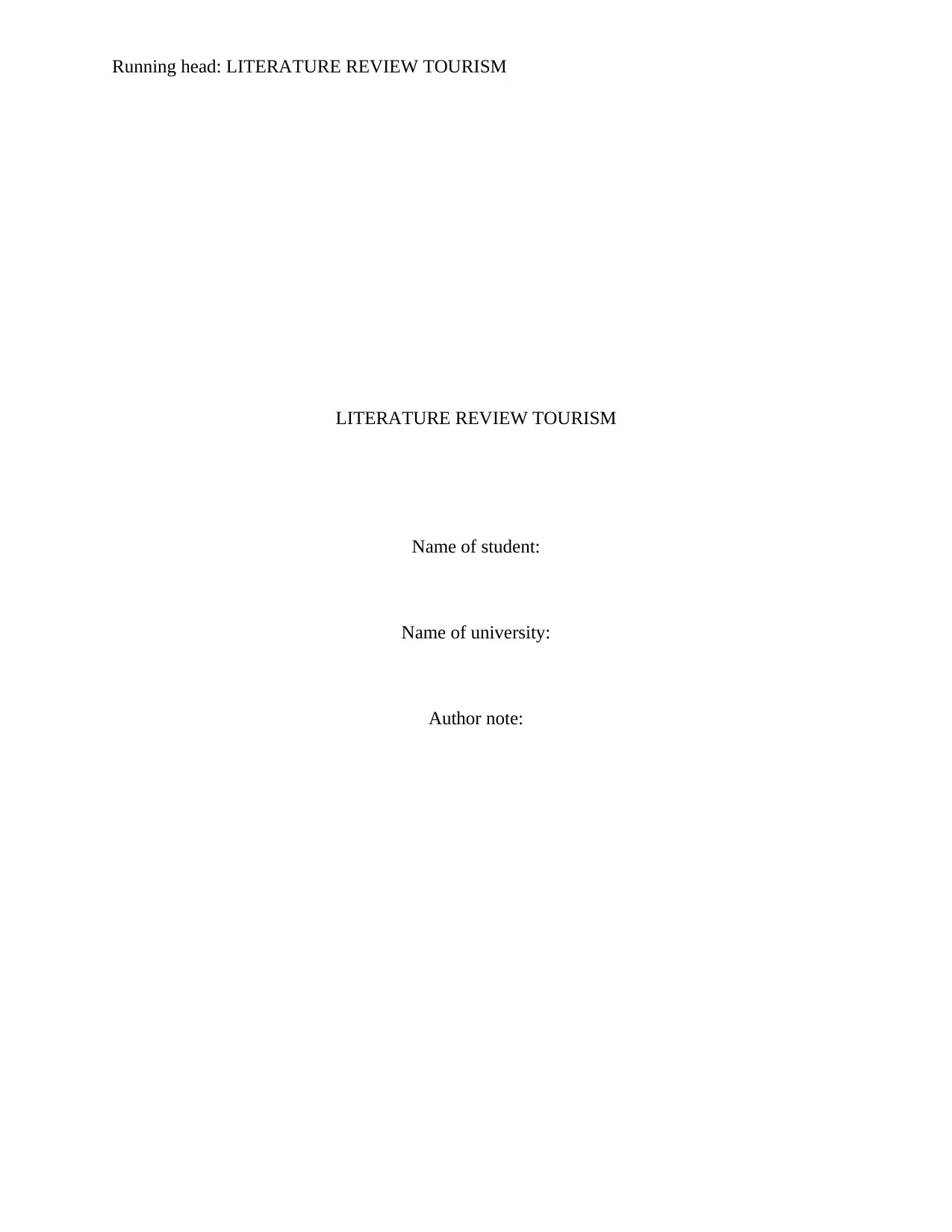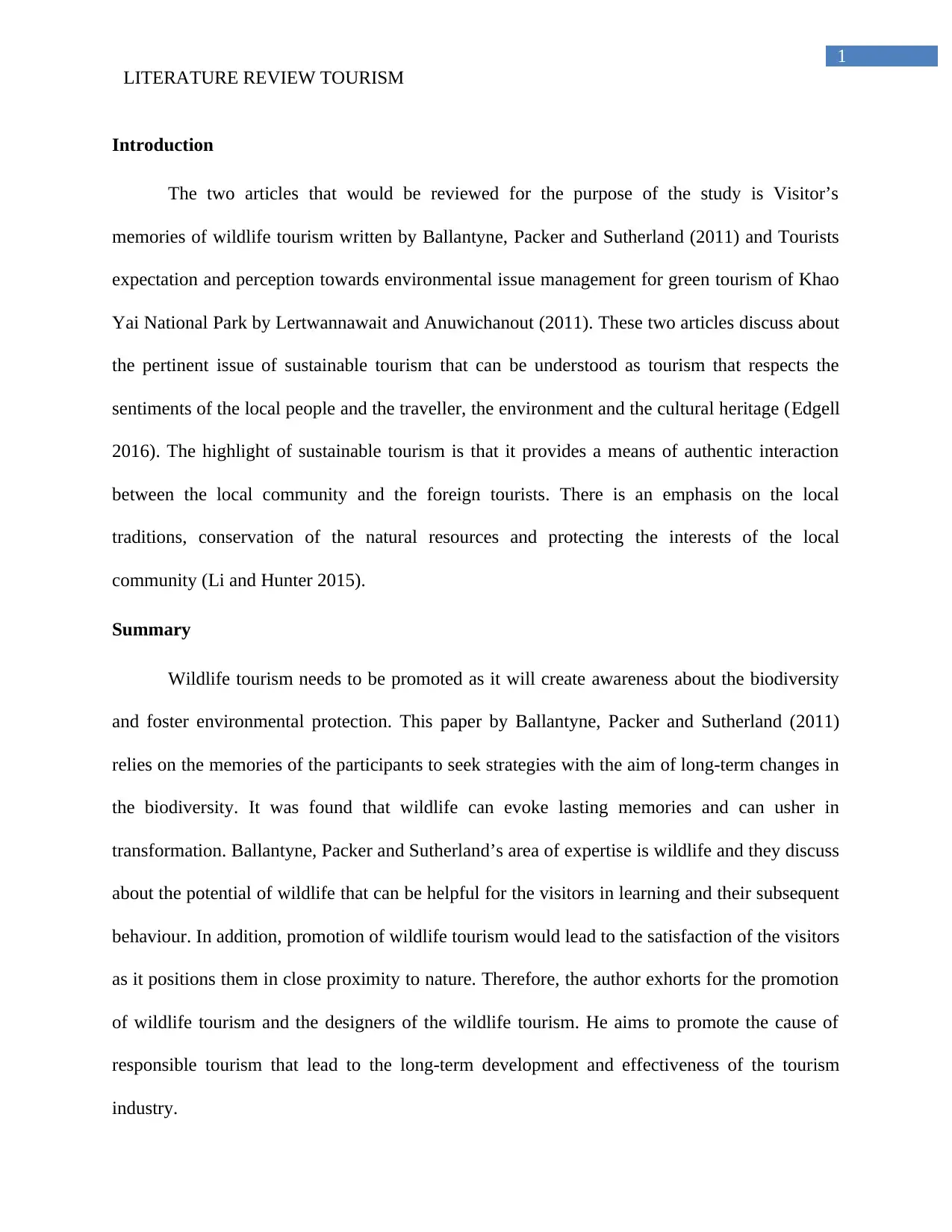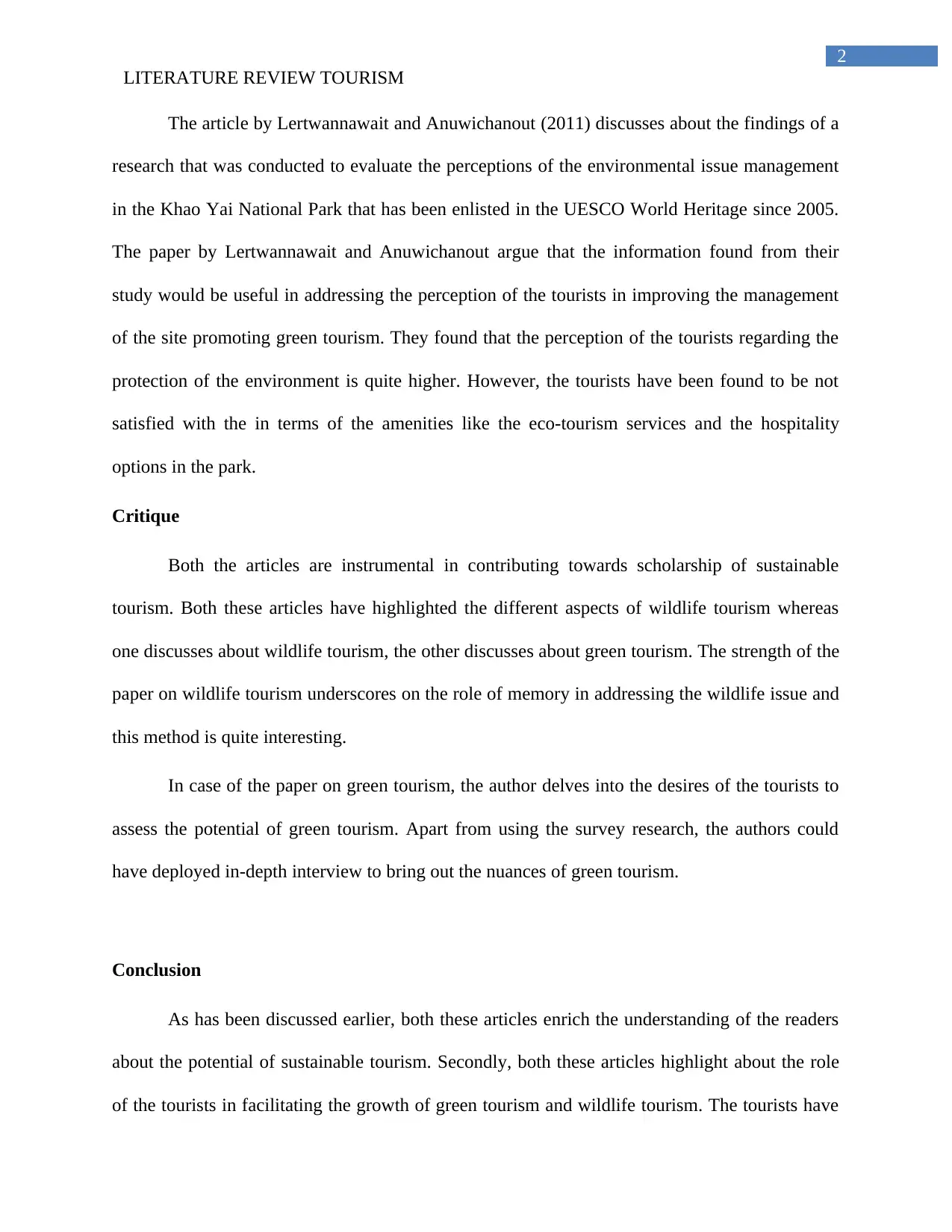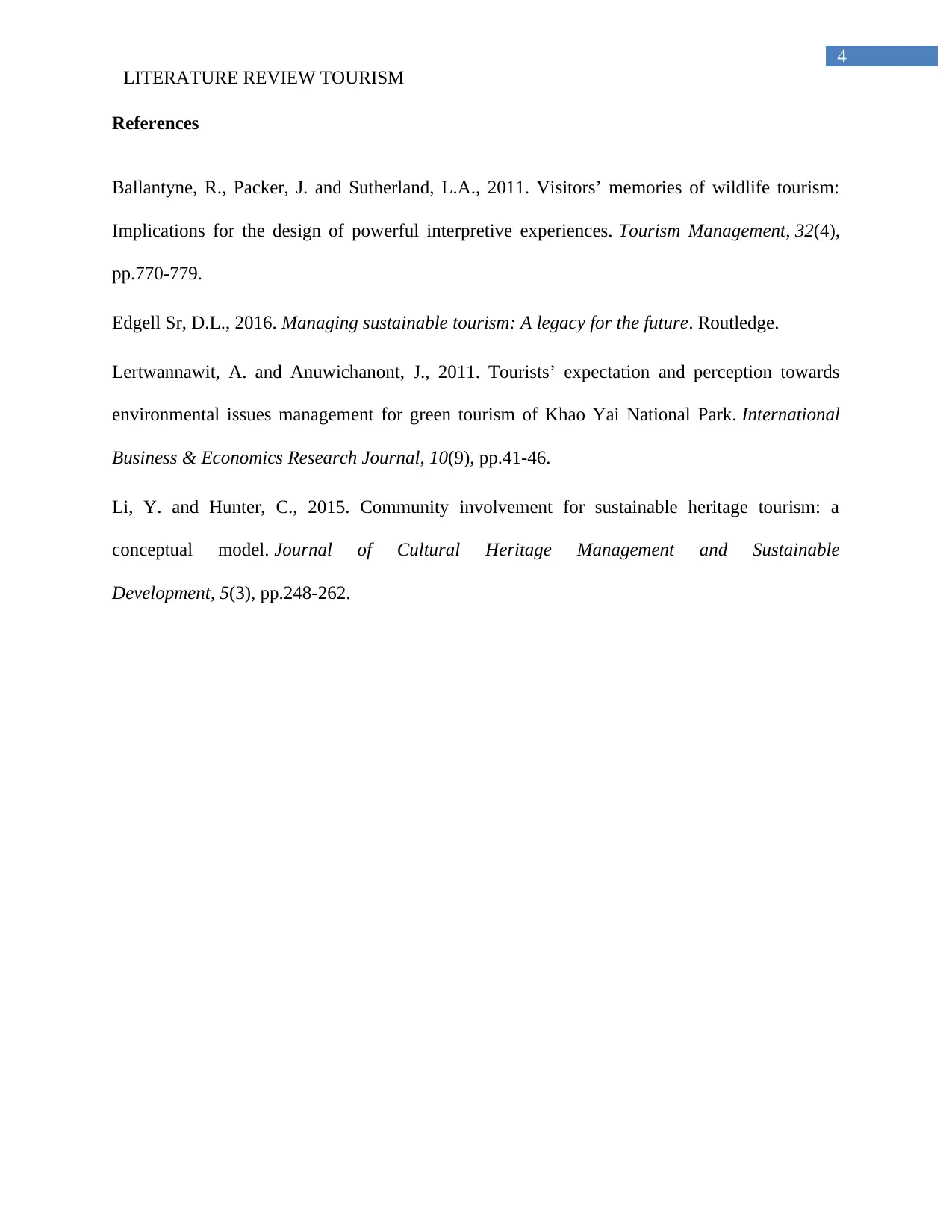Literature Review: Sustainable Tourism, Wildlife, and Green Tourism
VerifiedAdded on 2023/06/11
|5
|830
|137
Literature Review
AI Summary
This literature review examines two articles on sustainable tourism: one focusing on visitor memories of wildlife tourism and the other on tourists' perceptions of environmental issue management in Khao Yai National Park. The review highlights the importance of sustainable tourism in respecting local communities, the environment, and cultural heritage. It summarizes Ballantyne, Packer, and Sutherland's work on wildlife tourism's impact on biodiversity awareness and Lertwannawait and Anuwichanout's study on green tourism perceptions. The critique points out the strengths of both papers, such as the innovative use of memory in wildlife tourism research and the assessment of tourist desires in green tourism. The review concludes that both articles contribute to the understanding of sustainable tourism, emphasizing the crucial role of tourists in shaping the future of green and wildlife tourism.
1 out of 5







![[object Object]](/_next/static/media/star-bottom.7253800d.svg)